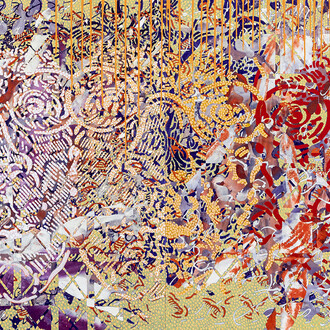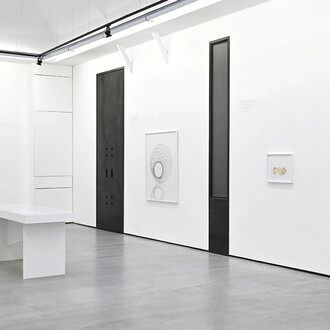Latin America has only left us with a few collections of asylum works, exception for Brazil with the one from the Dotoura Nise da Silveira and the other, monographic, devoted to Bispo do Rosario, both in Rio de Janeiro. Unfortunately, the psychiatrist Osorio Cesar’s collection in San Pablo was irrvocably dispersed.
As for the one that Prof. Honorio Delgado left us in Lima, Peru, it is only known today by some rare specialists or through Vol. 11 of Psychopathology of Expression, published in 1965, in which the psychiatrist delves into the case study of a schizophrenic painter.
Delgado – who had gathered a rich collection of almost 1500 works during his career – was however the great Latin American figure of psychiatry and psychoanalysis at the start of the 20th century. Head doctor of the Victor Larco Herrera Hospital from 1920 to 1969, he had maintained a long correspondence with Freud, which caused the latter to recognize him as the pioneer of psychoanalysis in Latin America.
Which is to say that discovering – half a century after the death of Delgado – a set of works ascribed to the last of his patients, John Ricardo Cunningham, is an unimagined event, showing both the work of one of the most illustrious psychiatrists of his time and the environment he was able to establish in order to allow for the emergence of such an important set of works.
Cunningham’s family was well inspired in honoring the memory of their ancestor by carefully conserving a remarkable ensemble that they are allowing us to share today.
John Ricardo Cunningham’s work inevitably evokes that of a certain Carlo Zinelli, born at the same time but on this side of the Atlantic.
As with the latter, the watercolors – most often produced with a primary palette – are very narrative and filled with symbols, iterations, incongruities, and texts that are at times elliptical, at times descriptive. Works inhabited by silhouettes of gentlemen wearing tailcoats, canes and top hats, by birds and other creatures frequently wearing a hat, all evolving at the among curious planispheres and (geo)political references that seem to indicate that the artist wanted to call on us to bear witness to the state of the world. Nevertheless, this dreamlike and fantasmagorical universe, although stripped of all seriousness, contrasts with falsely eloquent appearances and gives this body of work a mysteriousness and grace that are nowhere near the point of dissipating.
















